Lycoperdon umbrinum belongs to the group of fungi known as puffballs.
This is a blackish puffball often misidentified as Lycoperdon nigrescens. The primary external difference between the two species is that Lycoperdon umbrinum has an exoperidium composed of very short stubble-like spines that are less than 1 mm in length, whereas L. nigrescens spines are more than 1 mm long.
Lycoperdon nigrescens has a more northerly distribution, found primarily in Idaho, Oregon, and Washington, and perhaps extreme northern California. In this region, L. nigrescens is rare. As these specimens were found in Santa Cruz county, and the spines are clearly shorter than 1 mm, these specimens appear to be L. umbrinum.
Lycoperdon umbrinum is recognized by the globose fruiting body, which averages 2.0-5.0 cm tall, and 2.0-4.0 cm wide. This species is somewhat pear-shaped and unlike some puffballs, which lack a stem-like structure entirely, this species tapers below to a well developed ‘pseudostipe’ or stalk. This is an extension of the spongy internal tissue, rather than a true stalk like those seen with gilled mushrooms. The exoperidium is colored dark-brown to blackish-brown, with short spines typically less than 1 mm in height.
Small wart-like structures may also be visible in younger specimens toward the apex.
As previously mentioned, this is not a gilled species of mushroom. Instead, spores are formed internally in the sponge-like tissue in the spherical head of the puffball.
As this fungus matures, the spores are later released through a dorsal pore that develops in the exoperidium.
Lycoperdon umbrinum is found singly or widely scattered on soil or duff in hardwood and conifer woods. A number of these puffballs have been sighted sparsely scattered around our property, and one colony appears to be favoring the base of a giant Douglas fir tree overlooking the creek. Thus far this is the only species of puffball that has been observed here, but who knows what else our wet winter will bring?
Tomorrow we’ll wrap up ‘mushroom week’ with something from another large group of fungi known as polypores.

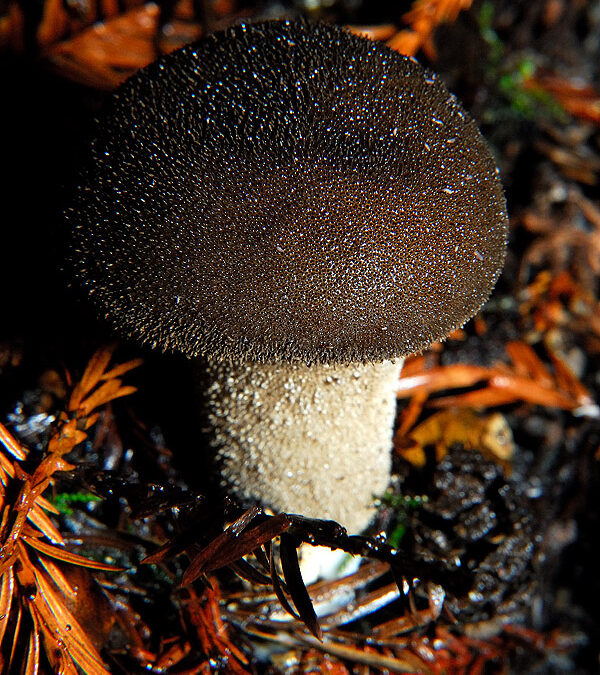
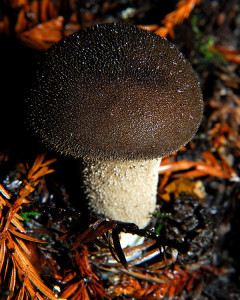
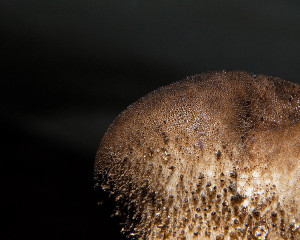

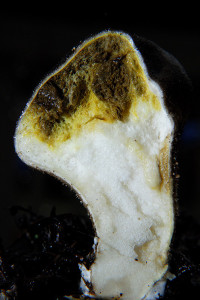
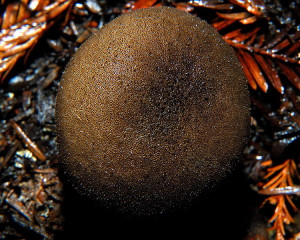








these fungi – they never cease to amaze me. I was on a blog earlier and they had these red finger type fungi – oh I will have to figure out who’s blog I was on but they were asking what they were. If I remember who it was I must get them to read over here.
I’ll have to return and catch up on the fungus posts – I enjoy them. I’m too busy with work right now to be cruising the blogosphere often. I even missed the Fungus Fair this year, in Santa Cruz. Thanks for the informative posts!
Thanks for giving some examples from your property of types of fungus (i.e. puffball, coral, jelly etc.) Good info to start to identify mushrooms.
Oh! Now it feels like we are entering into the dark realm! ;-0 I have fun with these … they are so light. Your photos and text are superb!